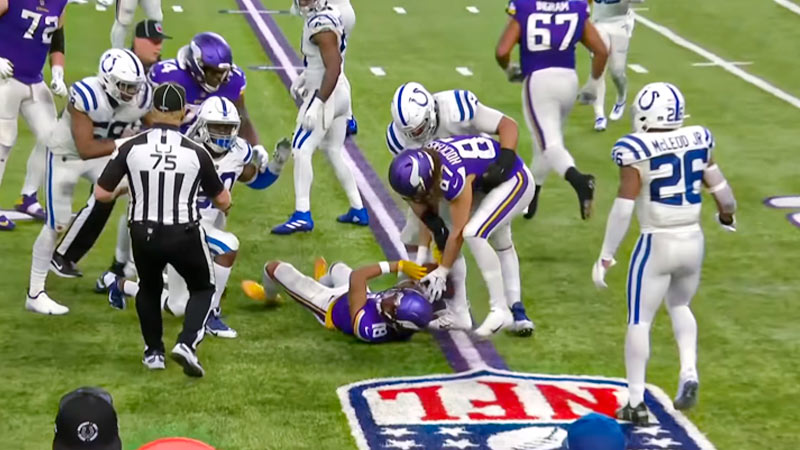In the high-intensity world of American football, every second counts. The game is defined by strategic plays, precision execution, and split-second decision-making. One crucial aspect that adds complexity and strategy to the game is the “Delay of Game” penalty.
This penalty not only affects the flow of the match but also influences a team’s tactics and momentum. In this blog post, we delve into the intricacies of the football delay of game penalty.
From its significance to its impact on gameplay, we’ll answer five frequently asked questions to provide you with a comprehensive understanding of this essential rule in the sport. So, get ready and stay focused.
What Is Football Delay Of Game Penalty?
In American football, the “delay of game” penalty occurs when the offense fails to snap the ball within a specified time frame after the previous play has ended. The purpose of this rule is to keep the game moving smoothly and prevent teams from intentionally stalling to use up time on the play clock.
In the National Football League (NFL), for example, the play clock is set to 40 seconds once the previous play ends. The offense must snap the ball before the play clock reaches zero. If the ball is not snapped in time and the play clock expires, the offense incurs a delay of game penalty.
The penalty results in a 5-yard loss of yardage against the offending team and a replay of the down (unless it was already a 4th downplay, in which case the yardage is lost, but the down does not reset).
The delay of game penalty is a way to maintain the pace of the game and ensure that both teams have a fair opportunity to run their plays without undue delay. It encourages teams to be efficient in getting their plays called and executed, which contributes to the overall flow of the game.
How Does a Football Delay Of Game Penalty Happen?
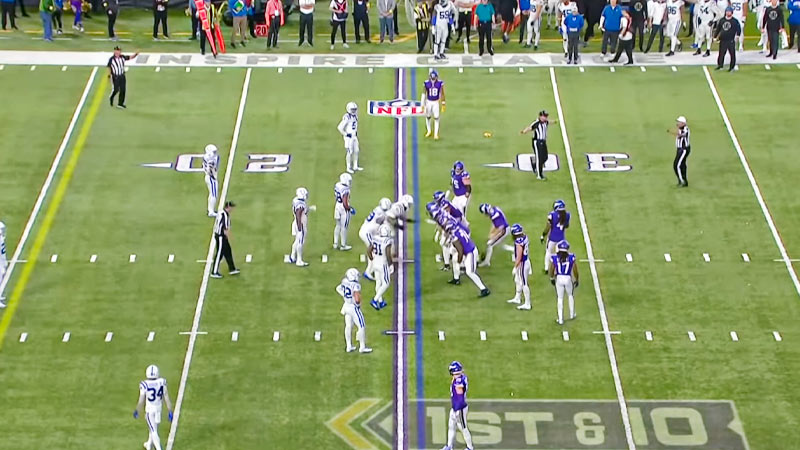
A football delay of game penalty occurs when the offense fails to snap the ball within a designated time frame after the previous play has ended. Here’s how it typically happens:
Play Ends
After the previous play ends, the officials spot the ball at the location where the play ended. This marks the start of the play clock, which is the time frame within which the offense must start the next play.
Play Clock Begins
The play clock starts counting down from a predetermined amount of time. In the NFL, this time is 40 seconds. The offense has this amount of time to snap the ball for the next play.
Offense Huddle or Formation
The offensive players gather in a huddle or line up in formation. The quarterback receives the play call from the coach or offensive coordinator.
Breaking the Huddle
The huddle breaks and the offensive players take their positions on the line of scrimmage.
Setting Up the Play
The quarterback and offense set up the play. They may make adjustments, call audibles, or change the play based on the defensive alignment.
Snap the Ball
The center snaps the ball to the quarterback, initiating the play. The offense engages in running, passing, or other actions to advance the ball down the field.
Play Clock Expires
If the offense does not snap the ball before the play clock reaches zero, a delay of game penalty is called. The officials will blow the whistle to stop the play, and the penalty will be assessed against the offense.
Penalty Assessment
The delay of the game penalty results in a 5-yard loss of yardage for the offense. The ball is moved back 5 yards from the original line of scrimmage.
Replay of Down
In most cases, the down is replayed. For instance, if it was 1st and 10 before the penalty, it becomes 1st and 15 after the penalty.
The delay of game penalty is intended to keep the game moving at a reasonable pace and prevent teams from deliberately stalling to gain a strategic advantage.
The Aftermath of Football Delay Of Game Penalty
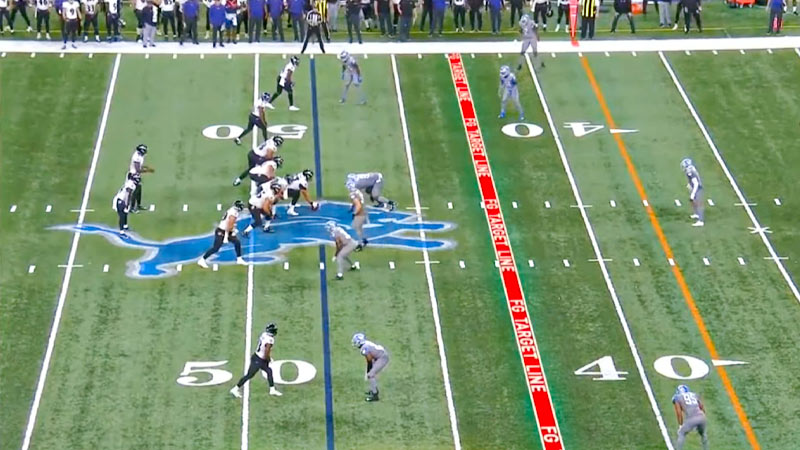
The aftermath of a football delay of a game penalty involves several key aspects that affect the game and the teams involved:
Yardage Loss
The penalty results in a 5-yard loss of yardage for the offense. This means that the offense’s next down will start 5 yards further away from the end zone than it would have if the penalty had not been called.
Down Replay
In most cases, the down is replayed. For example, if the penalty occurred on 1st down, the offense will now face 1st down and 15 yards to go (instead of 1st and 10). If it happened on the 2nd down, it becomes the 2nd down and 15, and so on.
Game Clock Adjustment
The game clock continues to run after a delay of the game penalty. This means that the clock keeps ticking, which can affect the amount of time available for both teams to execute plays. In contrast, the play clock is reset to a new 40-second cycle after the penalty is enforced.
Impact on Strategy
The penalty can impact the offensive team’s strategy for the current drive. Facing longer yardage can influence play-calling decisions, as the team might need to prioritize shorter, more manageable gains to avoid putting themselves in difficult down-and-distance situations.
Field Position
Depending on where the penalty occurred, the delay of the game penalty can affect a team’s field position. If the offense was near their own end zone, the penalty could push them even closer, potentially making it more challenging to move the ball down the field.
Time Management
The delay of the game penalty underscores the importance of effective time management by the offense. Teams need to ensure that they get to the line of scrimmage promptly, make quick decisions, and snap the ball in a timely manner to avoid incurring penalties.
Game Flow
The penalty can disrupt the flow of the game, causing stoppages in play and potentially altering the momentum for both teams. This can impact the overall pace and rhythm of the contest.
Coaching Adjustments
Coaches on both sides might need to adjust their strategies based on the outcome of the penalty. The defensive team might look to exploit the longer down-and-distance situation, while the offensive team could adapt their play-calling to better manage the penalty’s impact.
Football Delay Of Game Penalty Signals
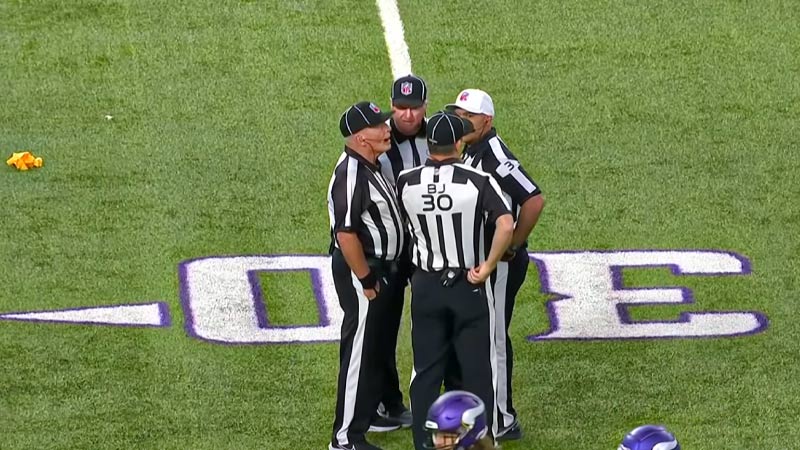
In American football, the delay of game penalties is signaled by the game officials using specific hand signals. The signals are used to communicate to players, coaches, and fans the nature of the penalty that has been assessed. Here are the signals used to indicate a delay of game penalty:
Raise Arm Horizontally
The official raises one arm horizontally across the front of their body. This signals that a delay of game penalty has been called.
Tap Wrist
While holding the arm horizontally, the official taps the opposite wrist with the other hand. This gesture indicates that the delay of the game penalty is due to the offense not snapping the ball within the allotted time.
Five Fingers Extended
After tapping the wrist, the official extends all five fingers of their hand. This signifies the 5-yard yardage penalty that will be enforced against the offensive team.
By using these hand signals, the officials ensure that players, coaches, and spectators understand the reason for the penalty and the consequences it carries. These signals play an essential role in maintaining transparency and clarity in the game’s officiating process.
Importance of Delay Of Game Penalty
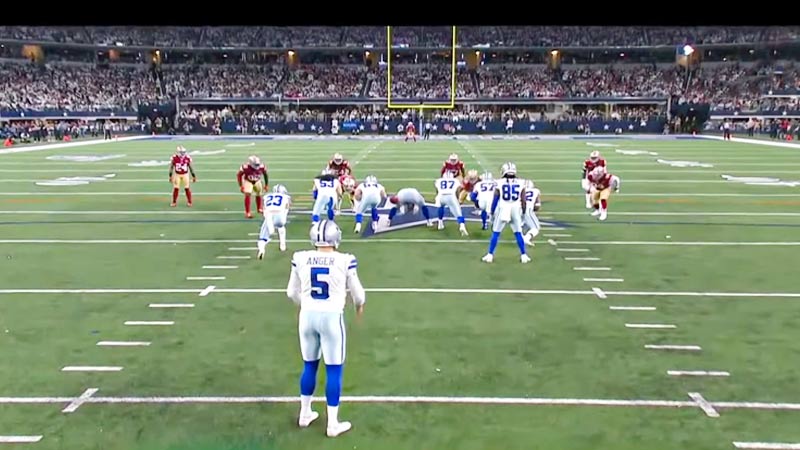
The delay of game penalty is important in football for several reasons:
Maintaining Game Pace
Football is a fast-paced and dynamic sport and the delay of-game penalties help keep the game moving smoothly. By enforcing a time limit for the offense to snap the ball, the penalty prevents teams from intentionally stalling the game to their advantage.
Fair Play
The penalty promotes fairness by ensuring that both teams have equal opportunities to run their plays without unnecessary delays. It prevents one team from gaining an unfair advantage by intentionally running down the play clock.
Strategic Implications
The penalty affects the offensive team’s strategy. When a delay in the game occurs, the offense faces a longer down-and-distance situation, requiring them to adjust their play-calling to overcome the added challenge.
Time Management
The penalty reinforces the importance of effective time management for the offense. It encourages teams to communicate efficiently, get to the line of scrimmage promptly, and execute plays in a timely manner.
Game Flow
Football games are driven by momentum and rhythm. Delay of game penalties can disrupt the flow of the game, impacting both teams’ momentum and the overall excitement of the match.
Coaching Strategies
Coaches must account for the possibility of delay of game penalties when designing their game plans. They need to ensure that their players are well-prepared to manage the play clock and avoid penalties.
Spectator Experience
Football is not only about the players and coaches; it’s also about the fans. Delay of game penalties contributes to a more engaging and enjoyable experience for spectators by reducing unnecessary stoppages and maintaining the game’s energy.
Player Accountability
The penalty holds the offensive players accountable for adhering to the play clock. It emphasizes the importance of discipline and focus during the game.
Officiating Consistency
Enforcing the delay of game penalty consistently ensures that the rules of the game are applied uniformly across all teams and games. This consistency enhances the credibility of the officiating process.
Teaching Moment
For coaches and players, delay of-game penalties serves as teaching moments. They highlight the need for effective communication, time management, and awareness of the field.
Penalties That Are Similar to Delay Of Game Penalty
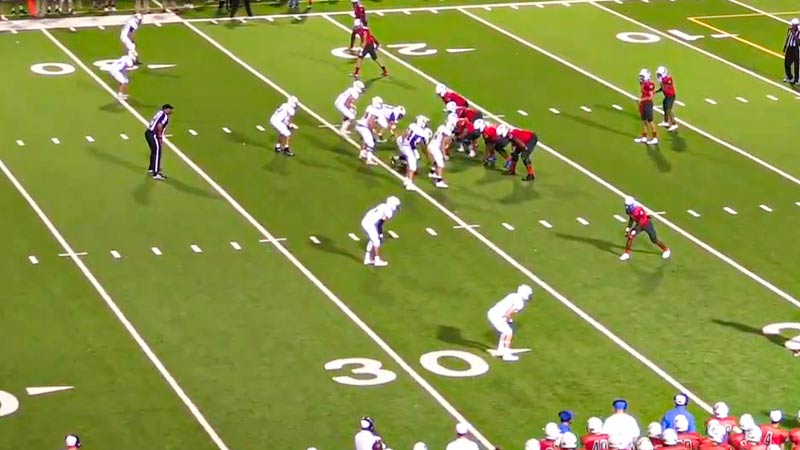
There are several penalties in football that share similarities with the delay of game penalty in terms of their impact on gameplay, time management, and fair play. Here are a few penalties that are related in some ways:
False Start
A false start penalty is called on the offense when one or more players move before the snap, simulating the start of the play. This penalty is similar to the delay of game penalty in that both involve procedural errors that result in the loss of yardage and disrupt the offensive team’s rhythm.
Illegal Motion or Shift
This penalty is assessed when offensive players are in motion or shift at the snap in a way that violates the rules. Like a delay of game penalty, an illegal motion or shift disrupts the offense’s ability to execute the play and can lead to a loss of yardage.
Intentional Grounding
When the quarterback intentionally throws the ball to an area with no eligible receiver to avoid a sack, an intentional grounding penalty is called. This penalty not only results in a loss of yardage but also includes a loss of down, impacting the team’s possession.
Offensive Holding
Offensive holding is called when an offensive player impedes the progress of a defender by grabbing or restraining them. While this penalty doesn’t directly involve time management, it can result in a loss of yardage and disrupt the offensive drive, similar to delay of game penalties.
Illegal Formation
This penalty occurs when the offensive formation does not meet the requirements defined by the rules. It can lead to a loss of yardage and negatively impact the flow of the game, just like a delay of game penalty.
Illegal Substitution
If a team improperly substitutes players onto the field or fails to give the defense sufficient time to respond, an illegal substitution penalty is called. This can disrupt the flow of the game and lead to a loss of yardage.
Unsportsmanlike Conduct
While not directly related to time management, unsportsmanlike conduct penalties involve actions that disrupt the game’s integrity or decorum. These penalties can impact field position, momentum, and the overall flow of the game.
Delay of Game (Defensive)
There’s also a rare defensive delay of game penalty, which occurs when the defensive team prevents the offense from snapping the ball quickly after a play. This is typically enforced after the ball is marked ready for play, and it results in a 5-yard yardage gain for the offense.
FAQs
What is a Delay of Game Penalty in Football?
The Delay of Game penalty in football occurs when the offense fails to snap the ball within a specific timeframe after the previous play has ended.
Designed to keep the game moving and ensure fair play, this penalty incurs a 5-yard loss of yardage against the offending team and can alter the course of a drive.
How is the Penalty Enforced?
Upon a delay of game, the game officials raise an arm horizontally and tap the opposite wrist to signal the penalty. This gesture communicates the 5-yard yardage loss due to the offense not snapping the ball within the allotted time.
The down is usually replayed, with the team facing an extended down-and-distance situation.
What Impact Does the Penalty Have on Strategy?
The Delay of Game penalty can be a game-changer in terms of strategy. Teams facing a longer down-and-distance situation must adjust their play-calling to overcome the added challenge.
Offensive coaches need to balance aggressive plays with the need to ensure a manageable distance for a first down.
How Does the Penalty Affect the Game Flow?
Football games thrive on momentum and rhythm. A delay of game penalty disrupts this flow, leading to stoppages in play and potential shifts in momentum. This impact emphasizes the importance of efficient time management and execution on the field.
How Does the Penalty Align with Fair Play?
The Delay of Game penalty aligns with the principles of fair play, preventing teams from exploiting the clock to their advantage. By setting a time limit for snapping the ball, the rule ensures that both teams have equal opportunities to execute their plays without unnecessary delays.
Wrapping Up
In the intricate tapestry of American football, the Delay of Game penalty stands as a reminder of the sport’s commitment to strategy, fairness, and efficient gameplay.
It’s not just about the 5-yard yardage loss or the added challenges; it’s about upholding the spirit of competition and ensuring that every team has a level playing field.
By understanding this penalty’s nuances and implications, both fans and players can gain a deeper appreciation for the complexities that make football an exhilarating and captivating spectacle on the field. Best of luck.

